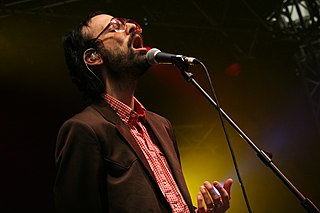A Quote by Margaret Wertheim
It turns out that hyperbolic structures are very common in nature, and the place where lots of people encounter them is coral reefs. Sea slugs, and a lot of other organisms with frilly forms, are biological manifestations of hyperbolic geometry, which is also found in the structure of lettuce leaves and kales, and some species of cactus.
Related Quotes
Coral reefs, the rain forest of the ocean, are home for one-third of the species of the sea. Coral reefs are under stress for several reasons, including warming of the ocean, but especially because of ocean acidification, a direct effect of added carbon dioxide. Ocean life dependent on carbonate shells and skeletons is threatened by dissolution as the ocean becomes more acid.
A billion homo sapiens are added every 11 years to the planet. The hypertrophy of a single species pushes other life-forms out of bed and into extinction. The decline of biological diversity is real and severe. The alarming loss of soil fertility, forest cover, and coral reef viability and the release of fossilized CO2 that nature put away 300 million years ago in its march toward greater diversity - all these "losses" and many others are the result of one life-form annihilating other life-forms in its immoral confusion of "dominion" with "domination."
It must be stressed that there is nothing insulting about looking at people as animals. We are animals, after all. Homo sapiens is a species of primate, a biological phenomenon dominated by biological rules, like any other species. Human nature is no more than one particular kind of animal nature. Agreed, the human species is an extraordinary animal; but all other species are also extraordinary animals, each in their own way, and the scientific man-watcher can bring many fresh insights to the study of human affairs if he can retain this basic attitude of evolutionary humility.
One way to think about a pure hyperbolic surface is that it's the geometric opposite of a sphere. If you look at a sphere, the curvature is the same everywhere, as opposed to, say, an egg, which clearly does not curve the same everywhere. This is what makes spheres geometrically important. Mathematically speaking, a sphere has positive curvature and a hyperbolic surface has negative curvature, but both have constant curvature everywhere.
There is part of a structure in which every species is related to every other species. And they're built up on species, like a pyramid. The simpler cell organisms, and then the more complicated ones, all the way up to the mammals and birds and so forth. We call it 'developing upward'... The whole thing depends on every part of it. And we're taking out the stones from the pyramid.




































